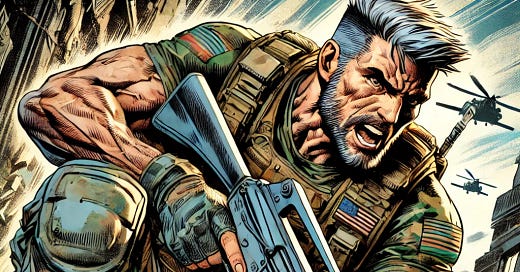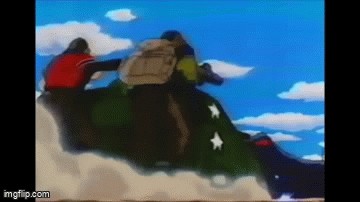If it had been a snake, it would have jumped out and bit you!
Ever hear this phrase? It was all too common where I grew up, and it implied that I hadn’t looked hard enough for something. Clearly, whatever I was looking for was hidden in plain sight.
Animals like that snake I mentioned make use of being the same color as their surroundings, at least some of the time. What I mean is that if a snake is green, that snake needs to stay around something green in order to blend in.
This contrasts with the chameleon, which can change the color of its skin to blend in with its surroundings. This type of trick has been imitated by humans for a long time, especially by ancient hunters, who must have understood how to use camouflage to hide in plain sight.
The word has a surprisingly modern origin, having only really come about during the early 20th century. The French word camoufler means to disguise. By the start of the first World War, the world camouflage was already gaining popularity among military circles, used in the same sense we use it today.
By the time I was in middle school in the mid-80s, camouflage was becoming a fashion statement. People who hunted wanted everyone to know it, so they started wearing camo hats when I was in high school. Metalheads wore cutoff camouflage fatigues they got from second-hand army-navy and thrift stores.
These folks all owed a debt of gratitude to the anti-war protesters of the 1960s who made this sort of iconoclastic activity more acceptable. Before them, there was something sacred about a former military uniform, and only those who dared to stick their middle finger defiantly up against the status quo would make such a fashion statement.
By the end of my high school days, cutoff camo shorts and combat boots had become the unofficial uniform of grunge, encouraging mainstream clothing manufacturers to jump on the manufacturing trend. As far as I can tell, they haven’t looked back since the early 90s.
Camouflage isn’t the only way people can hide in plain sight, as anyone who ever watched GI Joe cartoons growing up can tell you. Sure, lots of Joes wore camo, but those were never the ones I was into.
Among elementary school friend cohort, the only serious conversation around GI Joes centered around which of the two ninja characters was the best. If anyone said their favorite action figure (or cartoon character, or comic book character) was anyone other than Snake Eyes or Storm Shadow, we gave them the side-eye.
Seriously, look how badass Storm Shadow is here!
Storm Shadow and Snake Eyes were able to hide in plain sight too, but instead of camo that was shaded to look like natural foliage, they used cunning and guile to sneak around. Like the snake I mentioned at the beginning, they can find places where they blend in and go there, even if they can’t immediately adapt to their surroundings like a chameleon.
This idea of ninjas just kind of creeping around in mundane places where nobody would look—but often in plain sight—almost certainly deepened my growing obsession with martial arts, even if it was based on a more fantastical premise.
GI Joe showcased two of them, but this was just a symptom of an already existing ninja-mania that had taken over popular culture. Teenage Mutant Ninja Turtles was yet to take over mainstream media, but the comic books were already out into the ecosphere by the mid-80s.
Ninjas were in all sorts of martial arts movies, and then they began to appear in regular television shows. I remember Black Belt Magazine selling ninja stars in the back, and I remember being incredibly excited by this life-changing news.
Ninjas were no longer hiding, but they were definitely in plain sight by the time the video game Shinobi was dominating arcades in my home town.
Other ninja-themed games, shows, and books soon followed, paving the way for the blockbuster Teenage Mutant Ninja Turtles movie. While camouflage became a mainstream clothing trend that has lasted to the present day, it’s fair to say that the ninja, too, has only become more of a pop culture icon since then.
These two trends—camo and ninjas—were fashion forces during my youth. They represented two very different approaches to hiding in plain sight, both no doubt amplified by the very real Cold War spy game that was going on. People were just interested in fantasizing about hidden enemies, I suppose.
Did you wear camouflage when you were younger, either as a fashion trend or for practical purposes? How about ninjas—were you as obsessed with them as everyone I knew back then?








In fifth grade, I had a camo bucket hat I wore every day and kids called me Hunter…even though I was the only vegetarian in our school.
I remember the "American Ninja" movies being very popular in the bootleg VHS market in Ukraine. And I had the Shinobi game on my ZX Spectrum console - loved it. Also, I once made my brother walk with me around a chain of toy stores that have advertised a ninja costume. Sadly, they were all out and I never got to wear any ninja stuff. Life isn't always fair.